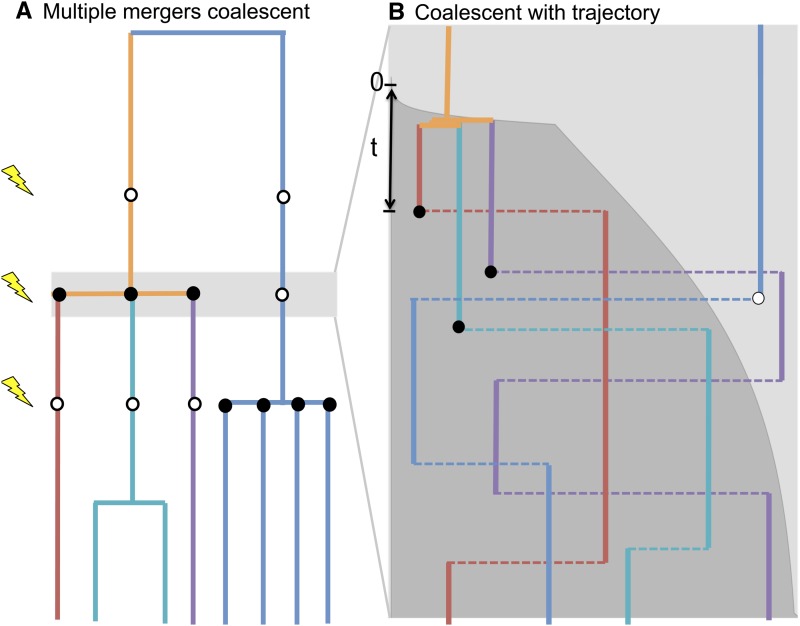Figure 1 .
(A) An example of a multiple-merger coalescent genealogy. Eight alleles have been sampled in the present day, and we trace their lineages backward through time, up the page. Lightning bolts indicate the times when a selected allele has swept into the population. At each sweep, each lineage is either descended from the original carrier of the derived allele at the selected site (lineages marked with a black circle) or descended from some other ancestor (lineages marked with a white circle). (B) Zooming in on one sweep. The frequency of the derived allele, D, through time, X(t), is shown in dark gray. The four surviving lineages are shown in different colors as in A. Horizontal dashed lines depict recombination events in the history of a lineage. A circle indicates the oldest recombination event experienced by each of our lineages before the D allele arose, and the color of the circle indicates where the allele recombined onto the D background (black) or on to the A background (white). As we approach the time the selected allele arose, the three lineages found on the D background coalesce into a single lineage.

